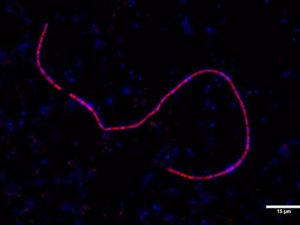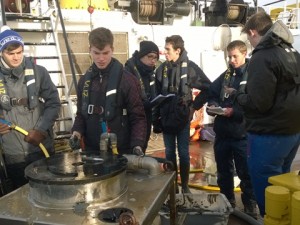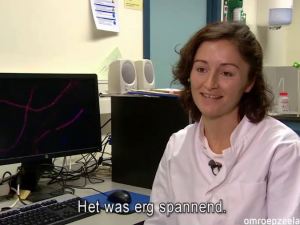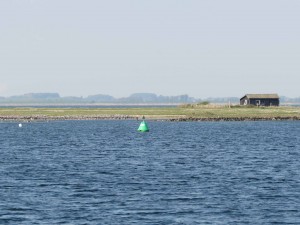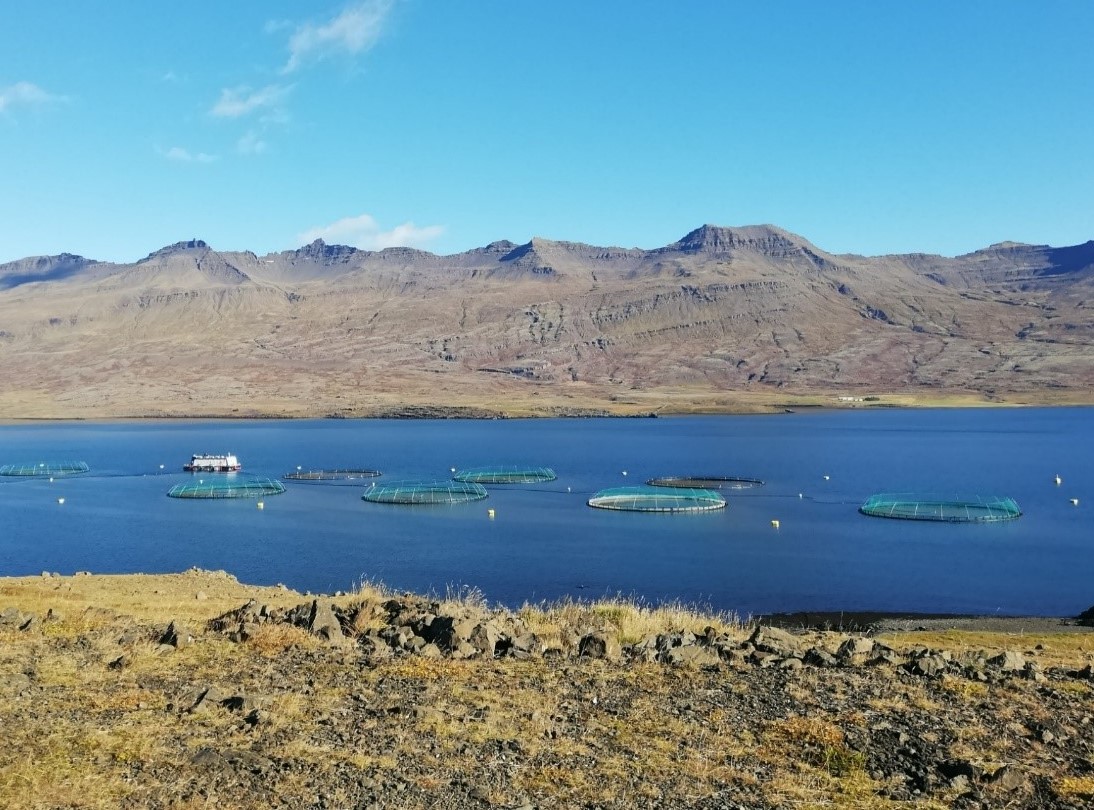
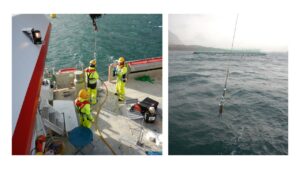
Figure 1. Sampling on the boat (left). On-board recovery of an UWITEC core with sediment collected 50 m away from a fish farm sea cage (right).
A throwback to December 2018: we travelled to Berufjörður bay on the SW coast of Iceland, known for its thriving salmon farming industry. Looking out into the bay with fish farm sea cages (photo on top, Figure 1) one would not think to find sediment that smells like rotten eggs by its rich sulphide content. However accumulation of sulphide under and near sea cages is one of the most persistent environmental effects of the fish farming industry. An ideal location to search for our sulphide-loving cable bacteria!
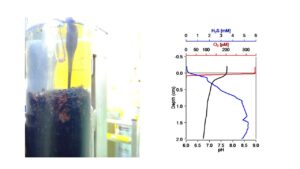
Figure 2. Sediment collected next to the sea cages (left) and the corresponding microsensor profiles (right) of oxygen (in red), pH (in black) and free sulphide (in blue). Particles (orange/pink) of degrading fish feed and fish faeces are visibly imbedded into the black sediment up to 3 cm depth.
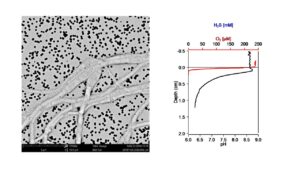
Figure 3. Scanning electron microscope (SEM) images of cable bacteria filaments (left) and the corresponding microsensor profiles of oxygen (in red) and pH (in black) obtained from lab incubations with fish farm sediments (right).
That’s where cable bacteria come into play. Cable bacteria are quite adapted to the high sulphide concentrations in marine environments. In fact they use sulphide and oxygen to produce energy. They are so efficient at oxidizing sulphide that they outcompete other sulphide-oxidizers in the environment. We travelled to Iceland to determine if cable bacteria were present and active in fish farm sediments. We found no signs of the characteristic geochemical fingerprint of electrogenic sulphide-oxidation by cable bacteria, but we did find DNA sequences highly related to marine cable bacteria (Candidatus Electrothrix) in all sediments collected. We also took fish farm sediment to the lab to enrich for cable bacteria, and lo and behold, cable bacteria grew within a week (Figure 3)! Our results indicate that fish farms are ideal locations to enrich for cable bacteria. They could reduce the toxic impact on fauna by preventing high sulphide concentrations. Our research will shed light on to the potential role cable bacteria play in fish farm sediments.

